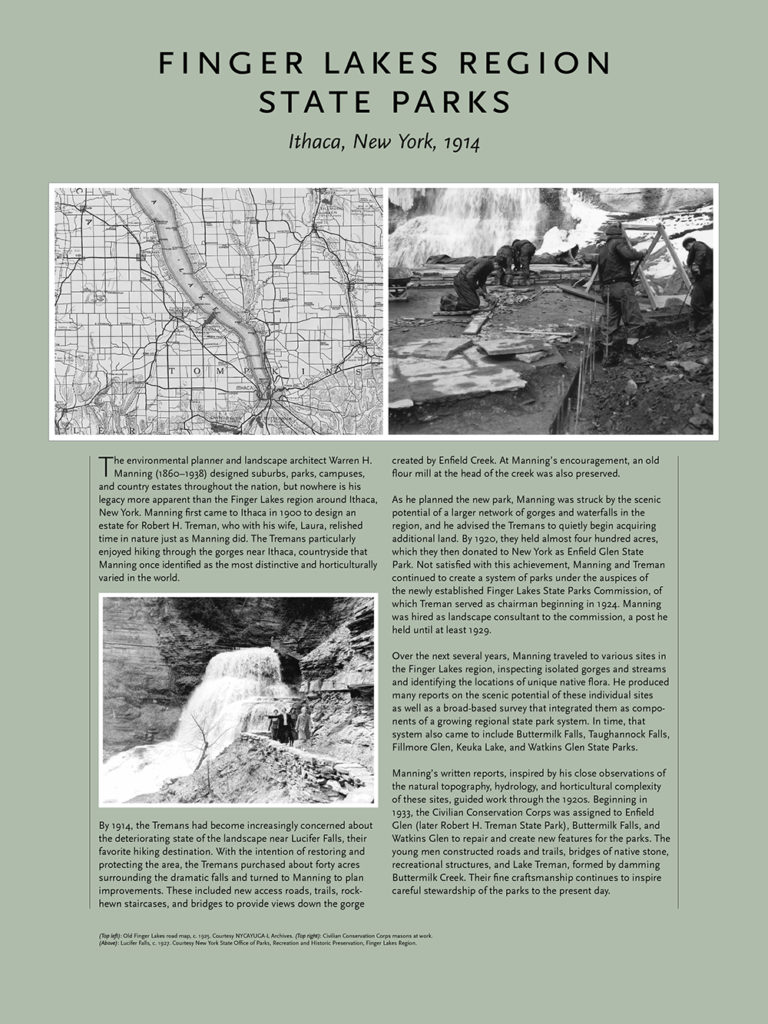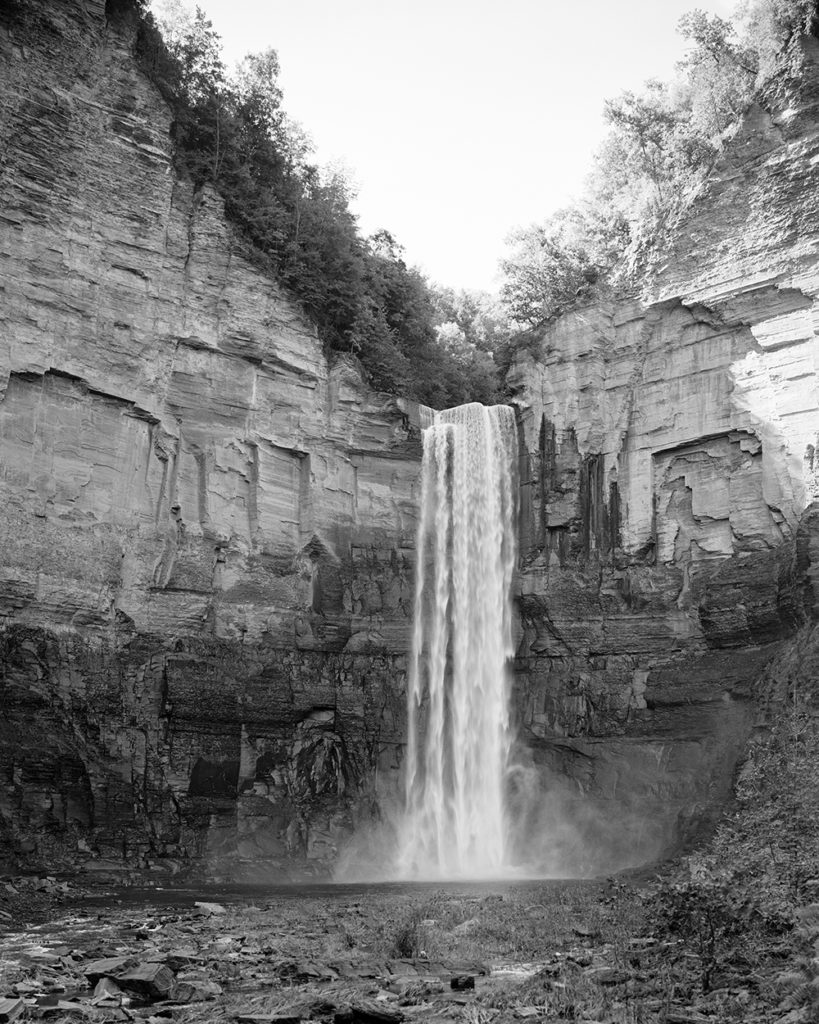
The environmental planner and landscape architect Warren H. Manning (1860–1938) designed suburbs, parks, campuses, and country estates throughout the nation, but nowhere is his legacy more apparent than the Finger Lakes region around Ithaca, New York. Manning first came to Ithaca in 1900 to design an estate for Robert H. Treman, who with his wife, Laura, relished time in nature just as Manning did. The Tremans particularly enjoyed hiking through the gorges near Ithaca, countryside that Manning once identified as the most distinctive and horticulturally varied in the world.
By 1914, the Tremans had become increasingly concerned about the deteriorating state of the landscape near Lucifer Falls, their favorite hiking destination. With the intention of restoring and protecting the area, the Tremans purchased about forty acres surrounding the dramatic falls and turned to Manning to plan improvements. These included new access roads, trails, rock-hewn staircases, and bridges to provide views down the gorge created by Enfield Creek. At Manning’s encouragement, an old flour mill at the head of the creek was also preserved.
As he planned the new park, Manning was struck by the scenic potential of a larger network of gorges and waterfalls in the region, and he advised the Tremans to quietly begin acquiring additional land. By 1920, they held almost four hundred acres, which they then donated to New York as Enfield Glen State Park. Not satisfied with this achievement, Manning and Treman continued to create a system of parks under the auspices of the newly established Finger Lakes State Parks Commission, of which Treman served as chairman beginning in 1924. Manning was hired as landscape consultant to the commission, a post he held until at least 1929.

Over the next several years, Manning traveled to various sites in the Finger Lakes region, inspecting isolated gorges and streams and identifying the locations of unique native flora. He produced many reports on the scenic potential of these individual sites as well as a broad-based survey that integrated them as components of a growing regional state park system. In time, that system came to include Buttermilk Falls, Taughannock Falls, Fillmore Glen, Keuka Lake, and Watkins Glen State Parks.
Manning’s written reports, inspired by his close observations of the natural topography, hydrology, and horticultural complexity of these sites, guided work through the 1920s. Beginning in 1933, the Civilian Conservation Corps was assigned to Enfield Glen (later Robert H. Treman State Park), Buttermilk Falls, and Watkins Glen to repair and create new features for the parks. The young men constructed roads and trails, bridges of native stone, recreational structures, and Lake Treman, formed by damming Buttermilk Creek. Their fine craftsmanship continues to inspire careful stewardship of the parks to the present day.
For more on Warren Manning read about the forthcoming book Warren H. Manning, Landscape Architect and Environmental Planner.